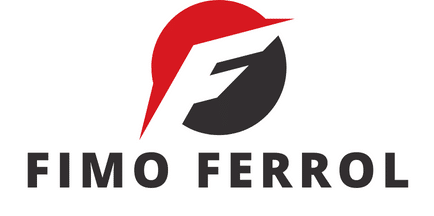What Are the Implications of Smartphone-Based Dermatology Diagnostics?

In a digital era where smartphones are increasingly pervasive, their implications on health care are profound. From fitness tracking to mental health support, the applications of smartphones extend into numerous areas of health care, including dermatology. The rise of smartphone-based dermatology diagnostics has revolutionized skin health care, offering promising solutions for early detection and management of skin conditions such as melanoma. This article explores the implications of this technological innovation, discussing its accuracy, the role of teledermatology, and the influence of apps like Google’s dermatol.
The Accuracy of Smartphone-Based Dermatology Diagnostics
Detecting skin conditions, particularly melanoma, requires a level of accuracy that cannot be underestimated. With the rise of smartphone-based skin diagnostic apps, questions about their accuracy have inevitably been raised.
En parallèle : How Can Community-Based Urban Renewal Programs Improve Neighborhood Health?
Studies based on crossref and scholar citations reveal that smartphone-based diagnostics have shown remarkable accuracy. A test conducted by Esteva et al. in 2021, for example, found that a mobile app could distinguish malignant skin lesions from benign ones with an accuracy comparable to dermatologists.
However, these apps are not without their limitations. The quality of images captured using smartphones can significantly influence the accuracy of diagnoses. Factors such as lighting, angle, and resolution can affect the visibility of lesions, potentially leading to incorrect diagnoses. Moreover, these apps often struggle to diagnose rarer types of skin cancer, suggesting that further improvements are needed.
A lire aussi : Can a Mediterranean Diet Enriched with Nuts Improve Memory in the Elderly?
Teledermatology: A New Frontier in Skin Health
One of the most significant implications of smartphone-based dermatology diagnostics is the rise of teledermatology. Essentially, teledermatology harnesses the power of technology to provide dermatological consultation and diagnosis remotely.
In the era of COVID-19, teledermatology has proven to be a crucial tool in ensuring uninterrupted dermatological care. Patients can take photos of their skin lesions and send them to dermatologists, who can then provide diagnoses and treatment plans without any physical contact. This can be particularly beneficial for individuals living in remote areas, who would otherwise struggle to access dermatological care.
However, as with smartphone-based diagnostic apps, teledermatology has its challenges. Both clinicians and patients must navigate the technical learning curve, and issues of data privacy and security must be addressed to ensure patient confidence.
The Influence of Google’s Dermatol App
In this evolving landscape of mobile-based skin health care, one app stands out – Google’s Dermatol. Launched in 2022, Dermatol uses artificial intelligence to analyze images of skin conditions and provide an initial diagnosis.
According to a study published in the Journal of the American Academy of Dermatology, Dermatol demonstrated an accuracy rate of 85% in diagnosing skin conditions. This places it on a par with junior dermatologists and potentially making it a valuable tool for individuals seeking preliminary assessments of skin conditions.
Despite these promising results, Dermatol should not replace professional medical consultations. It should be seen as a tool to encourage individuals to seek professional help, particularly those who might be hesitant or unable to access dermatological care.
The Future of Smartphone-Based Dermatology Diagnostics
Smartphone-based dermatology diagnostics are reshaping the field of dermatology, bringing care into the palms of our hands. Indeed, these technologies have the potential to democratize skin health care, making it more accessible to people regardless of their geographical location or socio-economic status.
However, we must remain cognizant of the challenges that come with these technologies. The accuracy of diagnoses is dependent on the quality of images taken, and data privacy and security issues must be addressed. Furthermore, while apps like Google’s Dermatol can provide initial diagnoses, they should not replace professional medical consultations.
Looking forward, ongoing research and development are crucial to enhancing the accuracy and reliability of these technologies. By doing so, we can ensure that smartphone-based dermatology diagnostics become an integral part of skin health care, enabling the early detection and management of skin conditions that could potentially save lives.
As we continue to navigate this era of digital health care, let us embrace the possibilities that smartphone-based dermatology diagnostics present. Let us strive to overcome the challenges that they pose, ever mindful of their potential to transform skin health care for the better. Let us move forward, confident in the knowledge that the future of dermatology lies, quite literally, in our hands.
The Effectiveness of Smartphone Apps in Skin Cancer Detection
In recent years, numerous smartphone apps have been developed with the aim of detecting skin cancer. These include the likes of SkinVision App, which uses an algorithm to analyze images of skin lesions and provide a risk assessment. The app’s effectiveness has been validated through various studies, including those indexed in Google Scholar and Crossref Medline.
For instance, a 2019 article published on PubMed highlighted the effectiveness of the SkinVision App in detecting malignant melanoma. The study, which was also referenced on Crossref PubMed, found that the app had a promising sensitivity specificity ratio in identifying this deadly form of skin cancer.
Despite these encouraging results, it’s crucial to remember that smartphone apps are not infallible. A study cited in Crossref and Scholar Crossref cautioned that smartphone apps could misdiagnose benign skin lesions such as seborrheic keratosis as malignant. Therefore, while these apps can be helpful in early detection, they should not be the sole method of diagnosis.
It’s also worth noting that smartphone apps’ diagnostic accuracy can significantly vary. Factors influencing this include the quality of the smartphone camera and the lighting conditions under which the skin lesion image is captured.
The Role of Artificial Intelligence in Dermatology Diagnostics
The increasing effectiveness of smartphone-based dermatology diagnostics can be largely attributed to advancements in artificial intelligence (AI). In this context, AI typically refers to neural networks that can analyze images and identify patterns indicative of specific skin conditions.
A key example of this is Google’s Dermatol, which uses an AI algorithm to analyze images of skin conditions. The app’s effectiveness has been validated in various studies, such as one published in Acad Dermatol that found Dermatol had a diagnostic accuracy of 85%, which is comparable to junior dermatologists.
Similarly, Preprints Org published a study highlighting the effectiveness of an AI system in distinguishing malignant melanoma from other skin lesions. The system demonstrated high sensitivity and specificity, further illustrating the potential of AI in this field.
However, while these strides in AI are promising, they should not replace professional consultations. As emphasized in a PMC free article, individuals should always consult a professional for a full diagnosis, especially when a skin lesion has been flagged as potentially problematic by an app.
Conclusion: Towards a New Era in Dermatology
Smartphone-based dermatology diagnostics represent a significant advancement in skin health care. Through apps like SkinVision and Google’s Dermatol, individuals now have the means to monitor their skin health proactively. These technologies have made it possible to detect skin conditions, particularly skin cancer, at their early stages when they are most treatable.
However, while these technological advancements are promising, they should not replace professional examinations. It’s important to remember that these apps are tools that can aid in the detection process but cannot provide definitive diagnoses.
Moreover, there are challenges to be addressed, such as ensuring the quality of images used for diagnosis and addressing data privacy and security concerns. Therefore, ongoing research and improvements are necessary to ensure these technologies’ accuracy and reliability.
As we continue to embrace the digital era, the future of dermatology seems bright and is quite literally, in our hands. By leveraging these technologies responsibly and in conjunction with professional care, we can help transform skin health care for the better.
